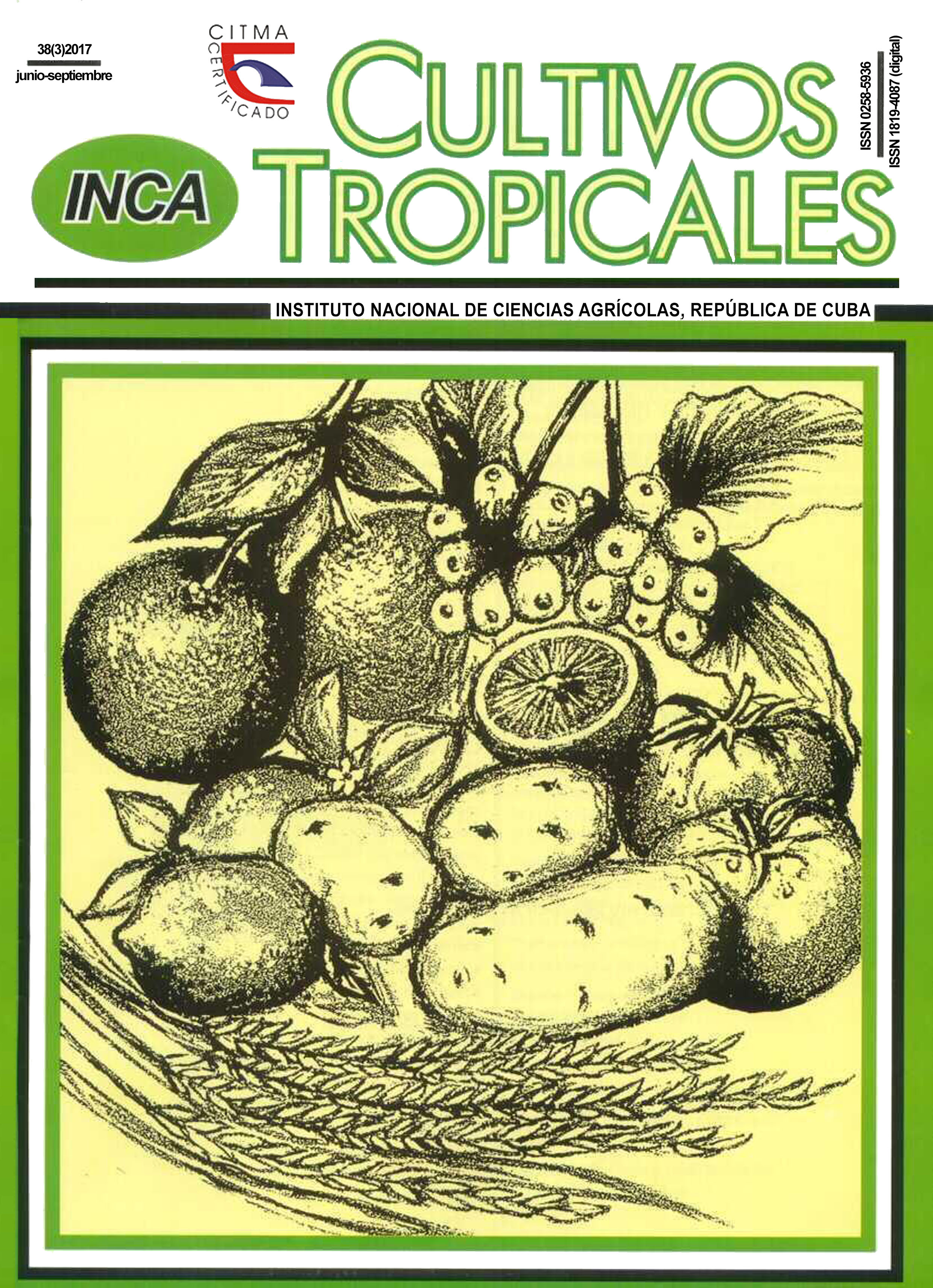Pectimorf® employment to stimulate tuberization in potato (Solanum tuberosum L.)
Main Article Content
Abstract
An experiment was carried out for two years in areas belonging to the National Institute of Agricultural Sciences (INCA) to evaluate the influence of Pectimorf® in the potato plant tuberization process, in order to evaluate the influence of Pectimorf® on the number of stems per plant and number of stolons and tubers per stem. The work consisted in applying Pectimorf® at a concentration of 10 mg L-1 at the time of planting, sprayed on the seed tubers and at 20, 25 and 30 days after planting the foliage and a control without application, following a completely randomized design. The plants were grown in containers of six liters capacity (two plants in each) containing a Ferralitic Red Eutric Compact soil and imported seed of the Romano variety of Dutch provenance for planting. Ten days after the last application, the following indicators were evaluated: number of stems per plant, number of stolons, and number of tubers per stem. The differences among treatments were evaluated using the confidence interval calculation of means from their standard error and means were compared using the t-student test p<0,05. All statistical processing was performed using Statgraphics v. 5.1 and the graphs were performed with the program SigmaPlot v. 11. The results showed influence of Pectimorf® on the induction of stolons and a greater number of tubers when applied at 25 days after planting when compared to plants that had not been treated.
Article Details
Those authors who have publications with this journal accept the following terms of the License Attribution-NonCommercial 4.0 International (CC BY-NC 4.0):
You are free to:
- Share — copy and redistribute the material in any medium or format
- Adapt — remix, transform, and build upon the material
The licensor cannot revoke these freedoms as long as you follow the license terms.
Under the following terms:
- Attribution — You must give appropriate credit, provide a link to the license, and indicate if changes were made. You may do so in any reasonable manner, but not in any way that suggests the licensor endorses you or your use.
- NonCommercial — You may not use the material for commercial purposes.
- No additional restrictions — You may not apply legal terms or technological measures that legally restrict others from doing anything the license permits.
The journal is not responsible for the opinions and concepts expressed in the works, they are the sole responsibility of the authors. The Editor, with the assistance of the Editorial Committee, reserves the right to suggest or request advisable or necessary modifications. They are accepted to publish original scientific papers, research results of interest that have not been published or sent to another journal for the same purpose.
The mention of trademarks of equipment, instruments or specific materials is for identification purposes, and there is no promotional commitment in relation to them, neither by the authors nor by the publisher.
